Sheikh Abdolsamad Mosque in Natanz, A 14th-Century Masterpiece
Sheikh Abdolsamad Mosque also known as the Jameh Mosque of Natanz, is a remarkable example of Persian architecture from the Mongol Ilkhanid period. Located in Natanz, Isfahan province, the mosque is deeply intertwined with the life of Abdul Samad al-Isfahani, a revered Sufi ascetic.
The complex, which includes a mosque, a khanqah (Sufi lodge), and the tomb of Sheikh Abdul Samad, was first constructed under the reign of Mongol ruler Öljaitü in the early 14th century. The mosque’s architectural beauty, particularly its conical dome and intricate brickwork, reflects the rich cultural and religious history of Iran.
With its origins dating back to 999 AD, the mosque has undergone several phases of construction and restoration, most notably during the Buyid and Ilkhanid periods.
The tomb of Sheikh Abdul Samad, adorned with turquoise tiles and exquisite muqarnas, stands as a stunning centerpiece of the complex. The serene courtyard, framed by four iwans, and the beautifully decorated prayer halls, highlight the mosque's spiritual and architectural significance.
Join us as we explore everything you need to know about Sheikh Abdul Samad's tomb, masjid e jami in Natanz, its rich history, captivating architecture, precise location, and how to get there!
About Masjede Jami in Natanz
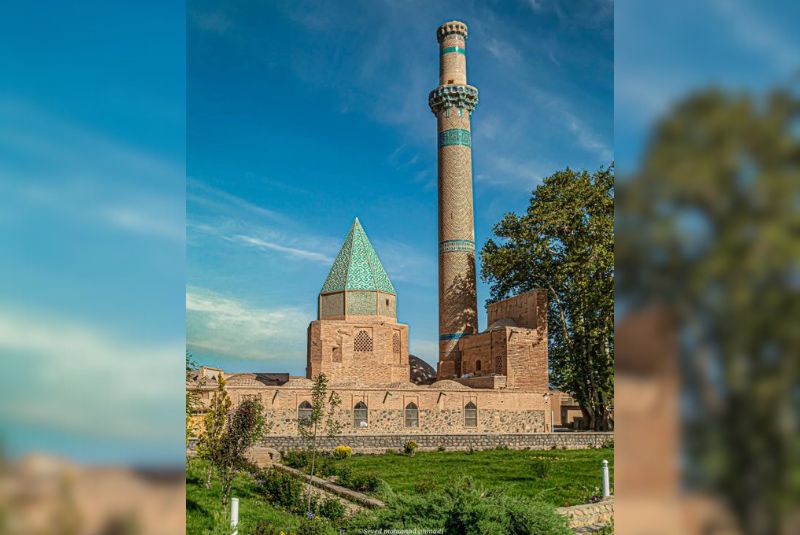
The Jameh Mosque of Natanz, located in Isfahan province, is a magnificent example of Ilkhanid architecture, dating back to the 14th century. This historic complex includes a mosque, khanqah (Sufi lodge), and the tomb of Abdul Samad al-Isfahani, a renowned Sufi saint.
The mosque’s construction began during the reign of the Mongol ruler Öljaitü and was completed between 1304 and 1325. The architecture blends stunning brickwork with turquoise tiles, showcasing intricate designs under its conical domes.
The mosque's courtyard connects four iwans, and the southern facade is adorned with vibrant glazed tiles and stucco. Inside, the tomb of Abdul Samad features elegant muqarnas and stucco decoration.
The khanqah, an integral part of the complex, once served as a spiritual retreat but was damaged during conflicts in 2009. The entire structure has undergone multiple restorations, preserving its rich historical and architectural legacy.
Sheikh Abdolsamad Mosque History
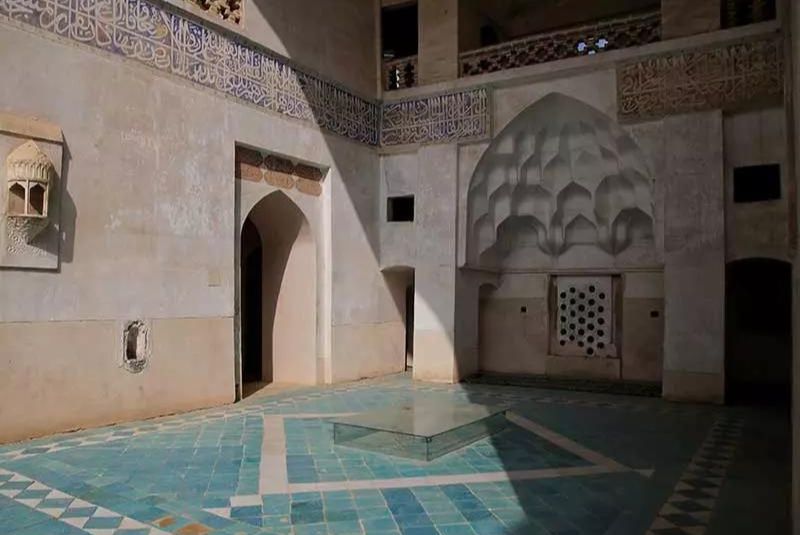
The Jameh Mosque of Natanz, a masterpiece of Ilkhanid architecture, was built in stages over several years. According to an inscription on the southern side of the mosque, the mosque's construction was ordered by Khalifeh Hossein ibn Mastari in 704 AH (1304 CE), with master builder Shams al-Din Mohammad Natanzi overseeing the work.
The mosque's intricate wooden door, adorned with stunning carvings, dates back to 825 AH (1422 CE), revealing over 600 years of history, although some of the carvings have deteriorated due to weather exposure. The mosque was constructed between 704 and 709 AH (1304–1309 CE), with the tomb of Sheikh Abdul Samad completed in 707 AH (1307 CE).
The impressive iwan at the front of the khanqah was added between 716 and 817 AH, and the minaret was completed in 725 AH (1325 CE). This historical complex is a remarkable example of medieval Persian architecture and continues to be a significant cultural landmark in Natanz.
Architecture of the Jameh Mosque of Natanz
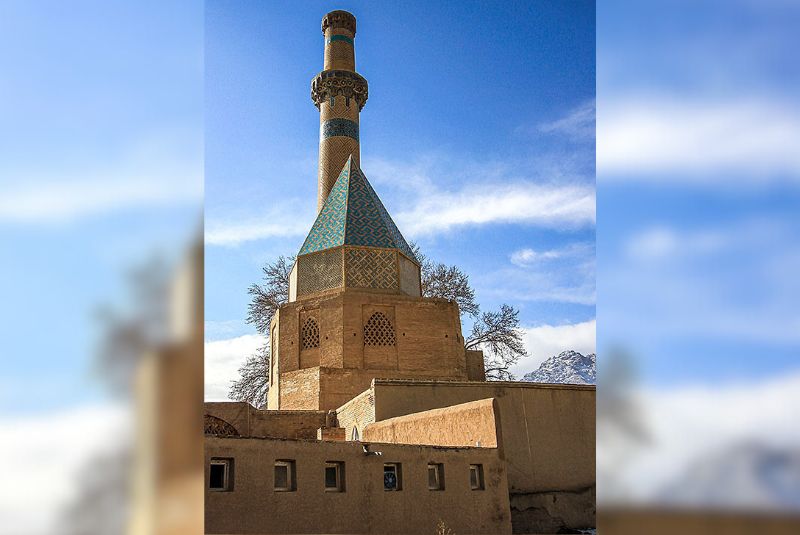
The Jameh Mosque of Natanz is a stunning example of Persian architecture, featuring a blend of elements from various historical periods. The mosque complex includes several key components, such as an octagonal brick-domed prayer hall, Sheikh Abdul Samad's tomb with a unique octagonal conical dome, the impressive entrance of the khanqah (Sufi lodge), and a tall, captivating minaret.
These features together create a visually compelling structure that attracts the attention of every visitor. Below are the different architectural features of the Natanz Jami mosque.
The Prayer Hall
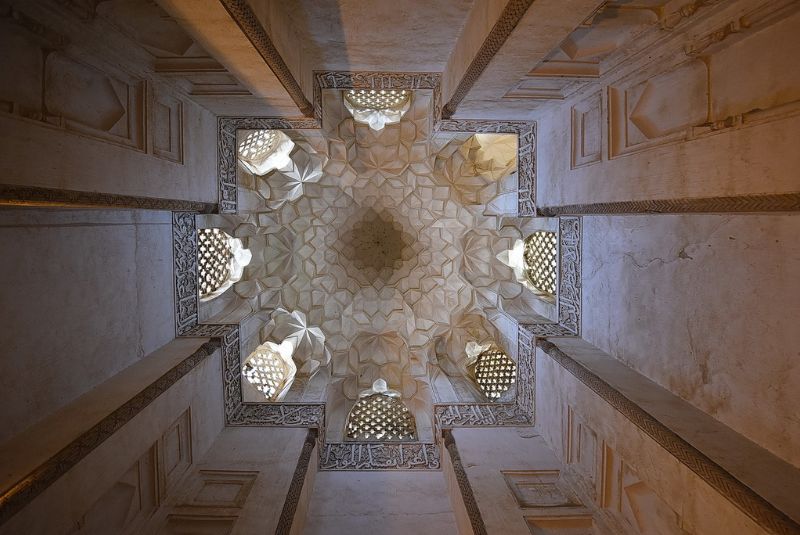
Upon entering the mosque from the southern side, visitors are greeted by a spacious corridor that lies about 1.5 meters below street level, reached by a series of 10 steps.
On the right side of the corridor, a smaller hallway leads to the octagonal domed prayer hall. This prayer hall boasts the oldest brick dome in the region, with over 1,040 years of history.
An inscription at the base of the dome, composed of raised brickwork, dates back to the Buyid dynasty (10th–11th centuries). During the Safavid period, this inscription was covered with stucco and decorated with intricate reliefs.
The Southern Iwan and Mihrab
The southern iwan (a vaulted hall or open room) and the mosque’s mihrab (a niche indicating the direction of Mecca) originally featured exquisite tilework. However, during the Qajar era, the mosque was looted by a Qajar prince who removed many of these tiles, which are now displayed in the Louvre Museum in France.
To prevent moisture from seeping into the foundation, the floor of the prayer hall has been raised on a platform with an air circulation system, allowing the air to dry any dampness from beneath.
The Courtyard
The mosque complex features a central courtyard flanked by four iwans, each oriented toward one of the cardinal directions—north, south, east, and west. These iwans, constructed during the Mongol Ilkhanid era, were added to complement the existing domed prayer hall. The courtyard serves as the heart of the mosque, connecting various elements of the complex and providing space for worship and community gatherings.
The Northern Iwan
The northern iwan of the mosque stands out with two tiers of plaster muqarnas (ornamental vaulting) and two inscriptions. One of the inscriptions, written in delicate plaster relief adorned with floral motifs, features verses from the Quran’s Surah At-Tawbah (9:18–19).
Another inscription near the arch dates to 709 AH (1309 CE) and is signed by a craftsman named Haider, who is also credited with the stucco work on the mihrab of the Jameh Mosque of Isfahan. Below this, another inscription from the Safavid era displays verses from Surah Al-Jumu'ah and Surah Hud, as well as two Hadiths.
Sheikh Abdul Samad's Tomb
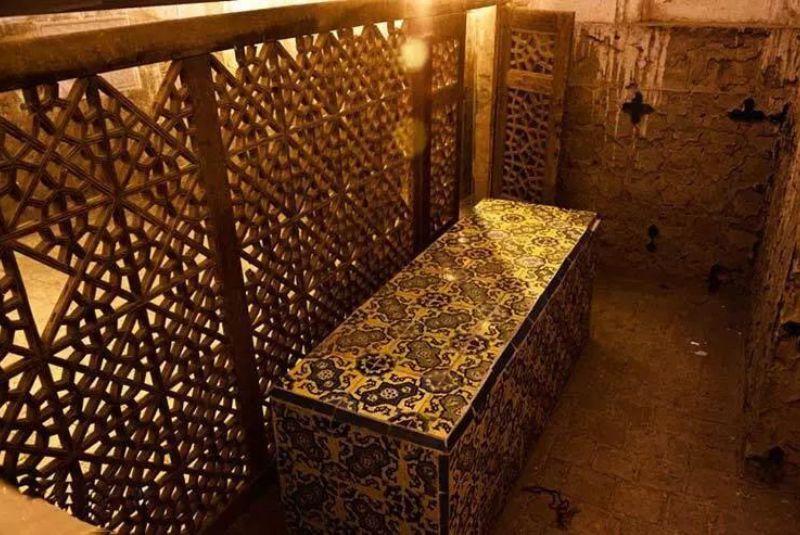
Sheikh Noor al-Din Abd al-Samad’s tomb features an octagonal double-shell conical dome that showcases extraordinary craftsmanship both inside and out. The exterior is decorated with brick and turquoise tilework, while the interior is adorned with muqarnas and finely crafted stucco decorations. From the center of the tomb, the intricately decorated muqarnas beneath the dome create a floral design, with the petals seemingly reaching downward.
At the base of the dome, an inscription in raised stucco features verses from Surah Al-Imran (3:167–169), and the name of the patron, Khalifeh ibn Hossein Mastari, who commissioned the tomb in 707 AH (1307 CE).
The tomb once had a stunning zarih (wooden screen) made of latticework, crafted by master carpenter Hussein ibn Ismail Natanz in 1064 AH (1654 CE). The screen, constructed entirely of interlocking wood pieces without the use of glue or nails, remains an extraordinary example of Persian woodworking.
The Minaret
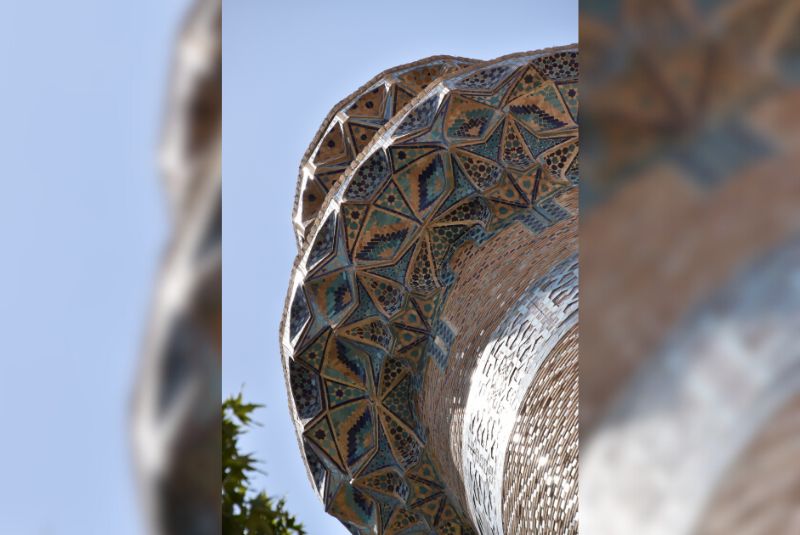
The mosque’s minaret is one of the most prominent and visually striking elements of the complex. Standing at 37.20 meters tall and featuring 118 spiral steps, the minaret is decorated with elaborate turquoise tiles and inscriptions in Kufic script.
The minaret is situated between the bluish entrance of the khanqah and the white entrance of the mosque, linking the two sections of the complex through a vaulted prayer hall.
The Khanqah Entrance

The entrance to the khanqah, adorned with a variety of tile designs and intricate patterns, is perhaps the most visually captivating part of the Jameh Mosque of Natanz.
Built after the completion of the mosque and Sheikh Abd al-Samad’s tomb, the khanqah served as a spiritual retreat for Sufi mystics. Though much of the khanqah has not survived, the entrance remains a stunning example of Ilkhanid architectural artistry. The entrance was restored in 1969, preserving its remarkable beauty.
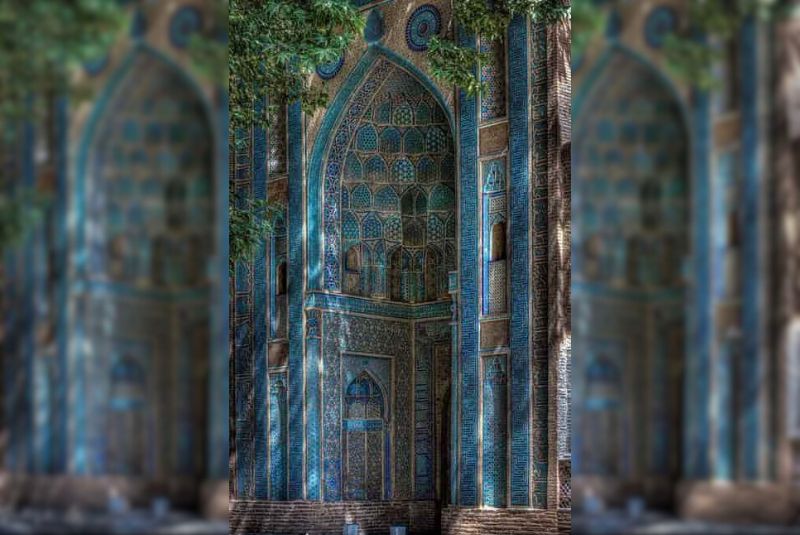
The tilework on the entrance features intricate turquoise and cobalt designs, and muqarnas vaulting typical of the Mongol period. An inscription in raised stucco encircles the entrance, executed by the master calligrapher Shams al-Din Mohammad Ali Natanzi in 716 AH (1316 CE).
Jameh Mosque of Natanz Location and Access
The Jameh Mosque of Natanz is located in the heart of Natanz, a historic town in Isfahan Province, Iran. The mosque is one of the main historical attractions of Natanz, drawing visitors from all over. It is situated on Malek Ashtar Street, close to the town’s central square and the bustling bazaar area, making it easily accessible for visitors.
How to Get There
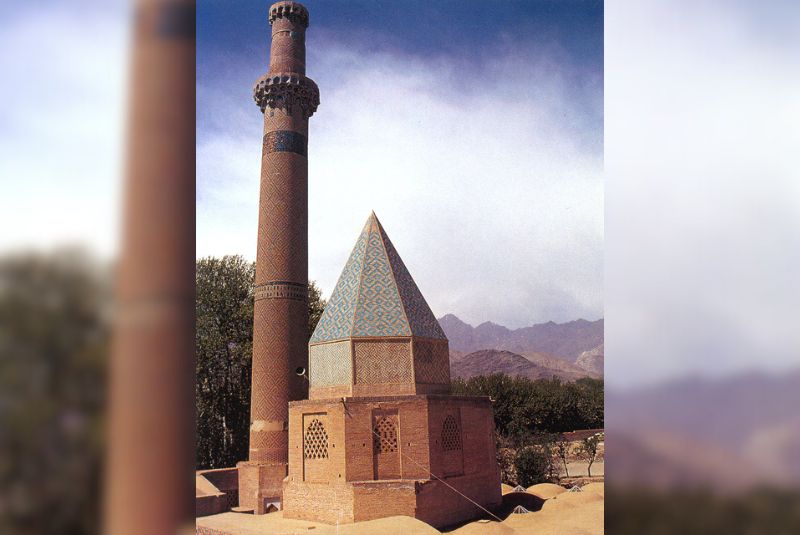
To reach the Jameh Mosque of Natanz, travelers can start from the Baghestan district, a well-known part of the town. From there, head towards Bahonar Street and then proceed to Malek Ashtar Street.
Once on Malek Ashtar, take a western side street called Golestan Five. As you follow this route, you will be able to spot the mosque’s iconic minarets and the nearby tomb, which act as landmarks guiding visitors to the mosque.
Opening Hours
Visitors can explore the Jameh Mosque of Natanz at any time of the day. However, it is recommended to visit during sunrise or at sunset during the call to prayer (Adhan). These times offer a deeply spiritual experience, as religious ceremonies take place, adding to the mosque's tranquil and mystical atmosphere.
Tips for Visiting Jameh Mosque of Natanz
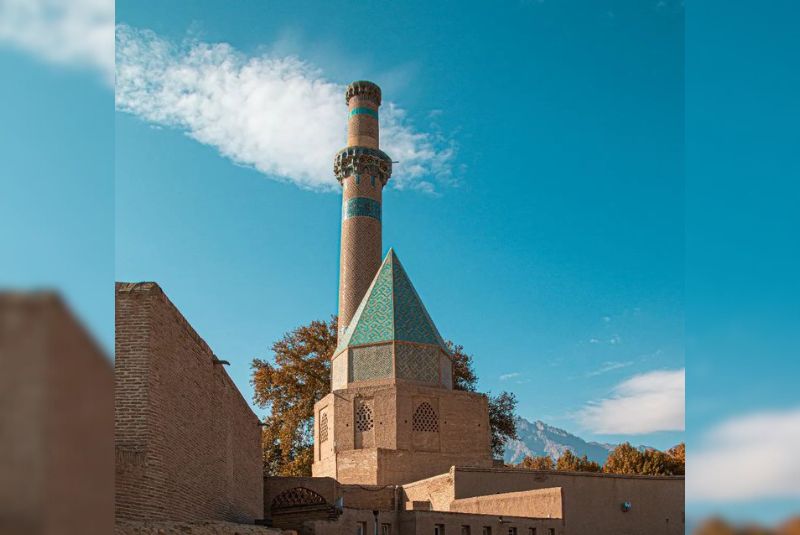
- Dress Modestly: Wear appropriate clothing, covering shoulders and knees, as it's a religious site.
- Visit During Prayer Times: Sunrise and sunset during the call to prayer offer a spiritual experience.
- Explore the Architecture: Take time to admire the intricate tile work, minaret, and muqarnas.
- Respect the Sanctity: Be mindful of ongoing prayers and religious practices.
- Photography: Capture the beauty, but avoid taking photos during prayer times to maintain respect.
- Quiet Atmosphere: Keep noise levels low to preserve the serene environment.
Bottom Line
The Jameh Mosque of Natanz, also known as Sheikh Abdolsamad Mosque, is a stunning example of Ilkhanid architecture located in Isfahan province. Built during the early 14th century under Mongol ruler Öljaitü, this historic complex features a mosque, a khanqah (Sufi lodge), and the tomb of the revered Sufi saint Abdul Samad al-Isfahani.
The mosque's architecture, with its conical domes, intricate brickwork, and vibrant turquoise tiles, reflects Iran’s rich cultural and spiritual heritage. The site, which has seen numerous restorations, continues to attract visitors with its beautifully preserved details and deep historical significance.
Share your story!
Comment below and let us know about your Experience.
Your story inspires others!


Comment
Leave a Comment